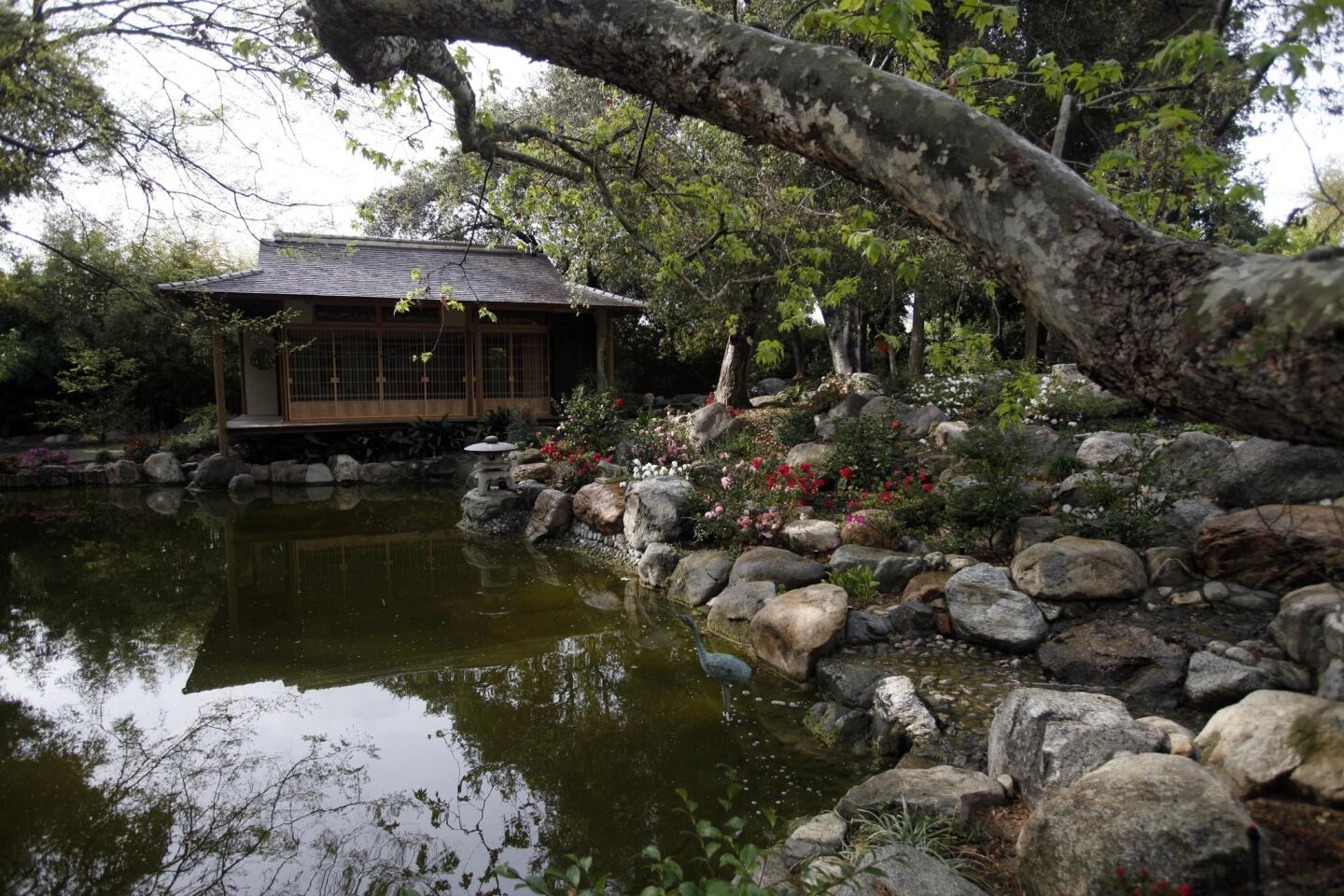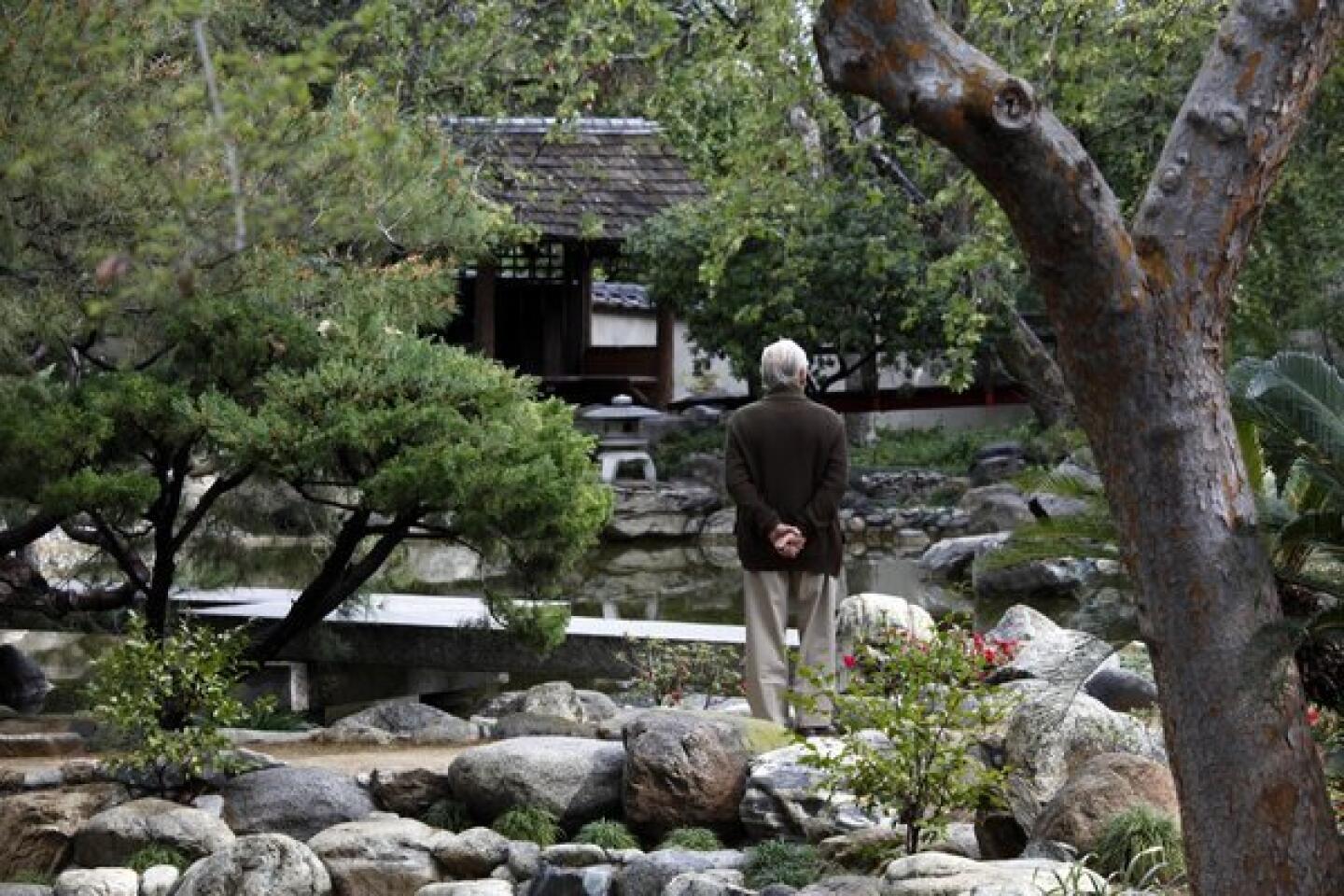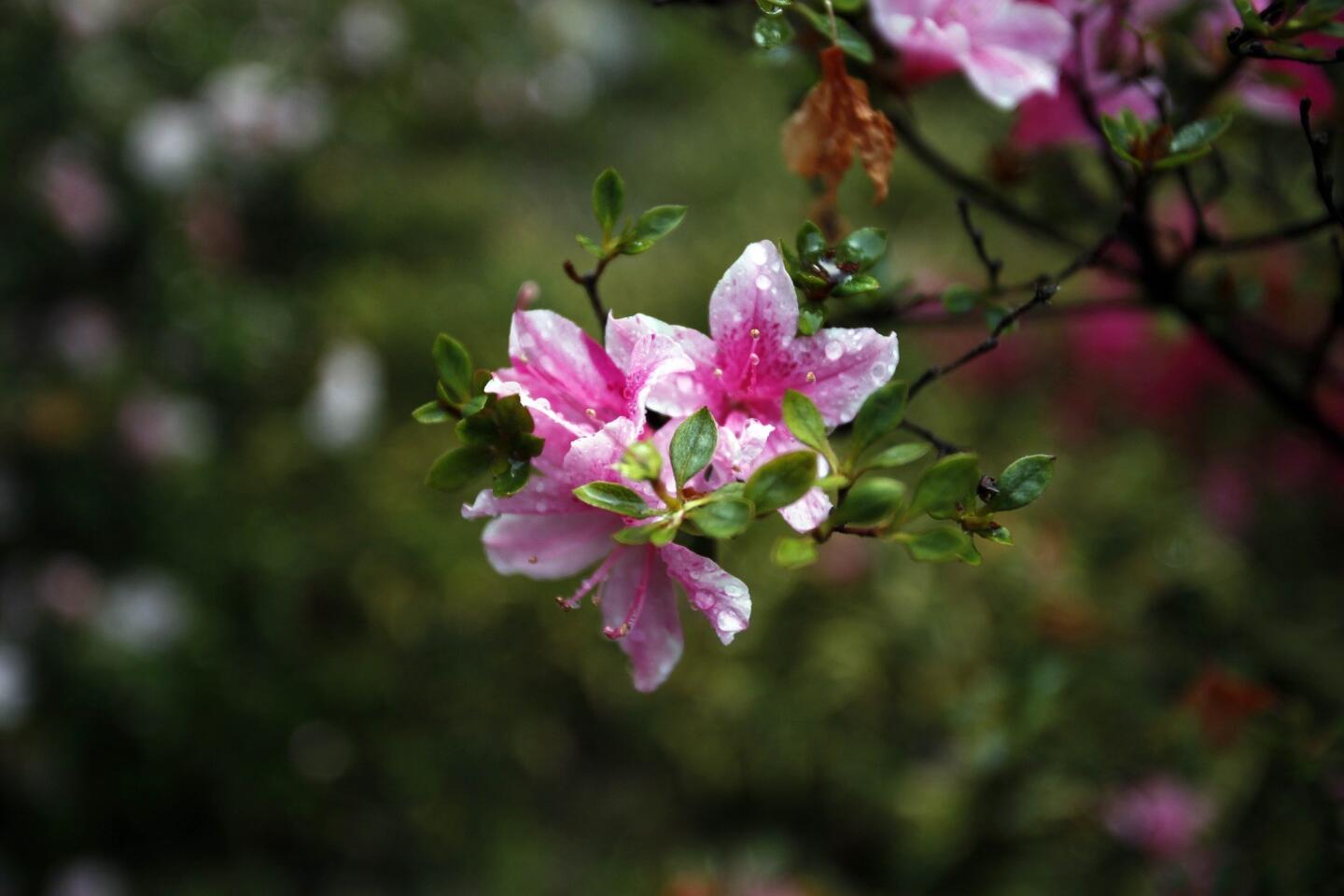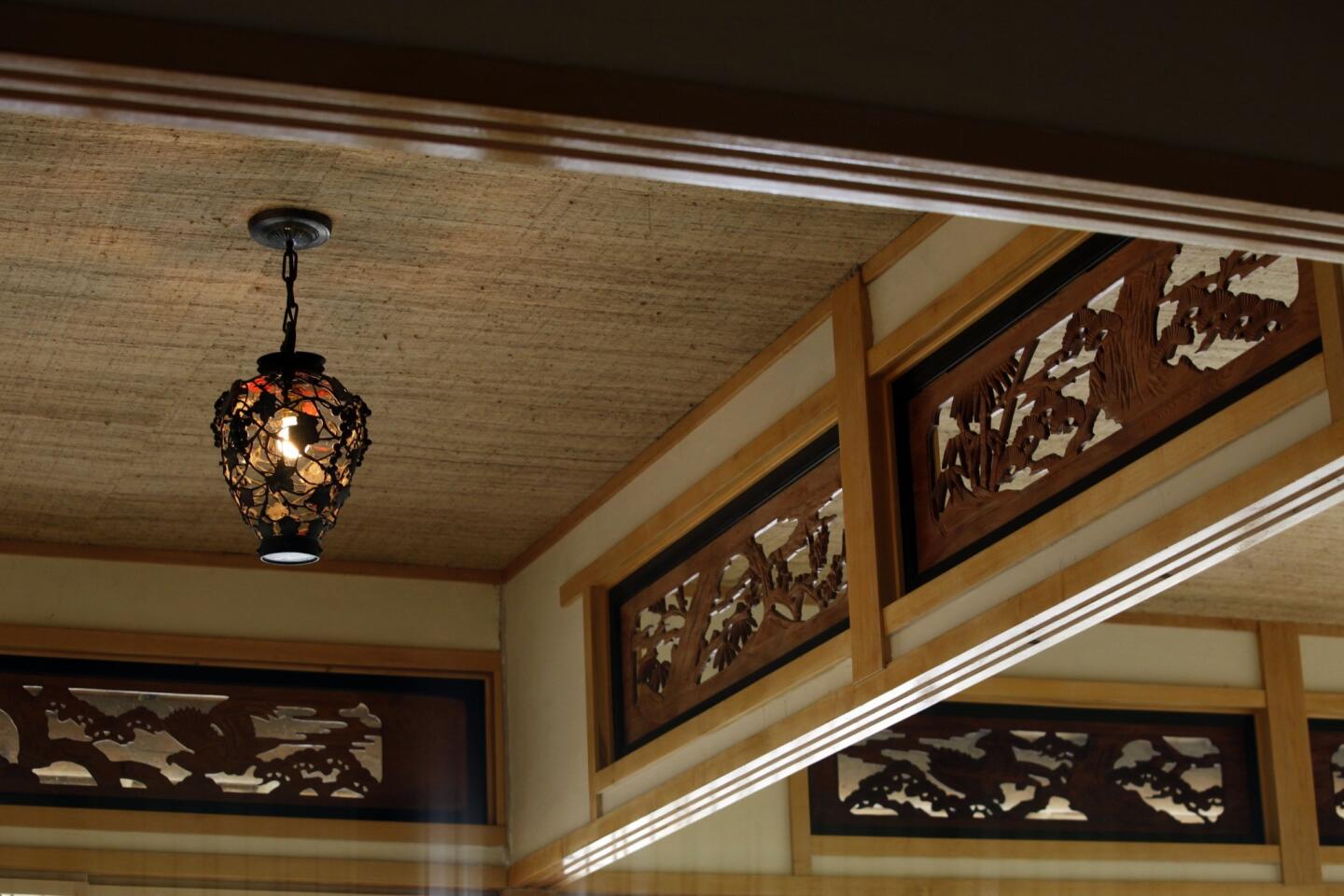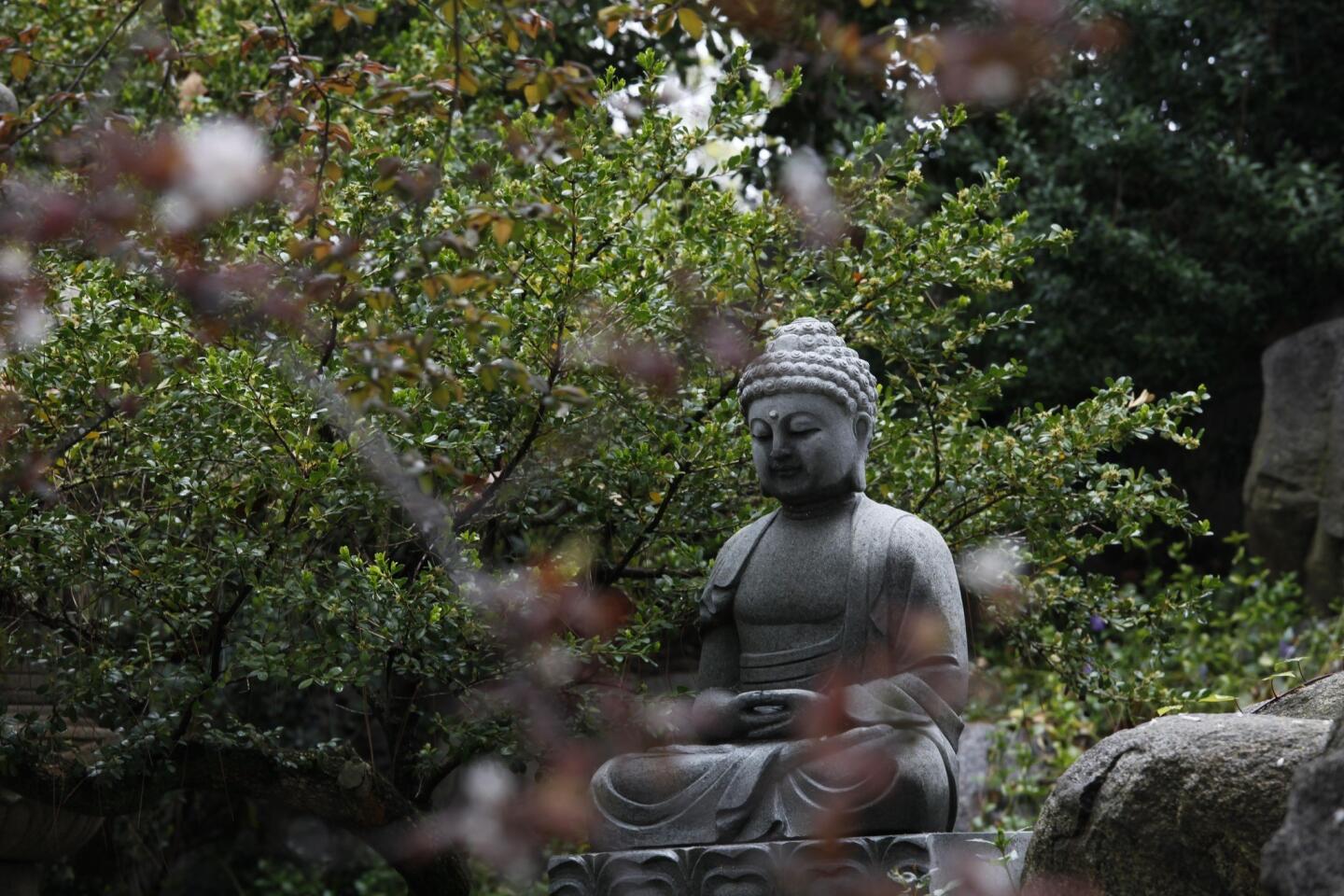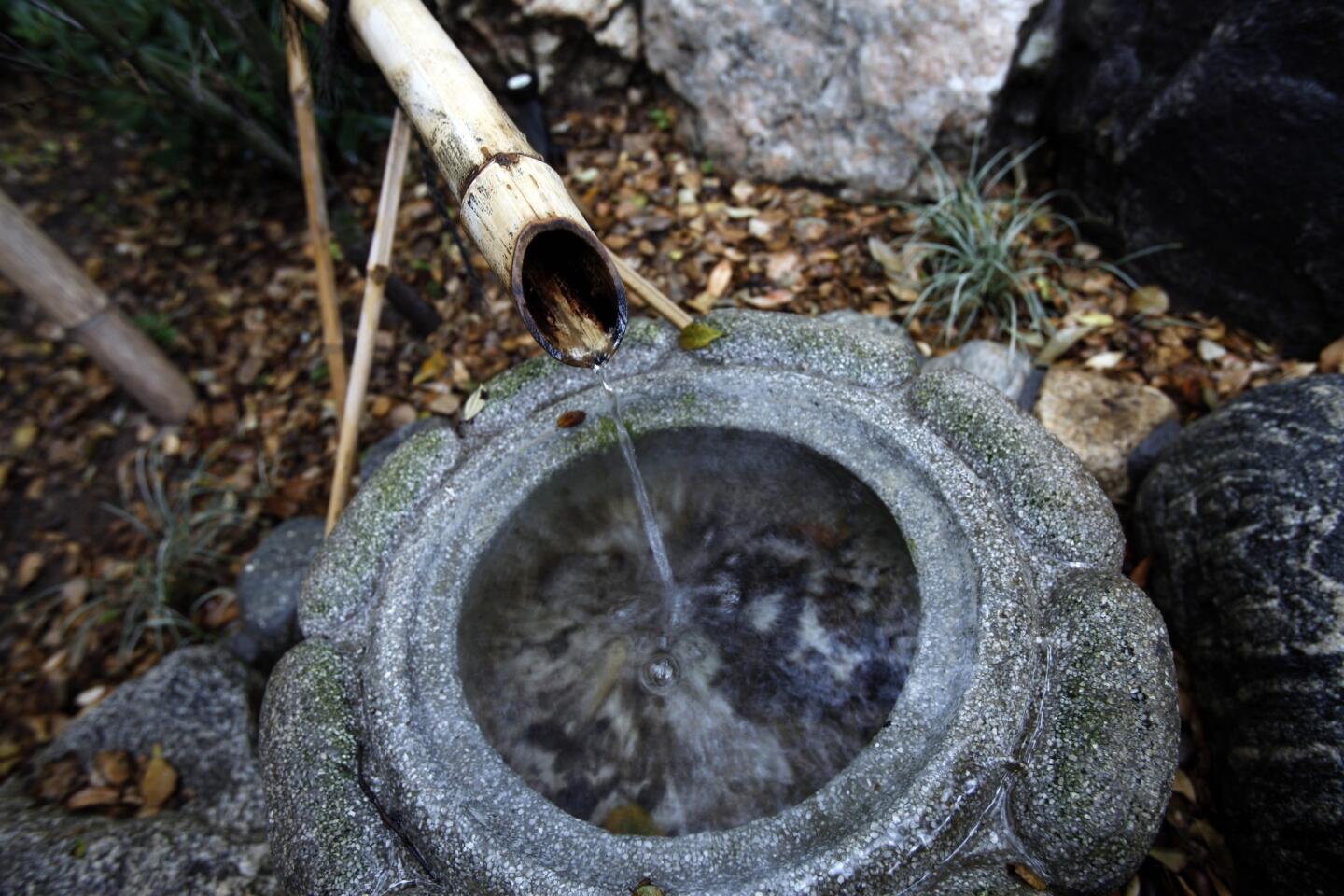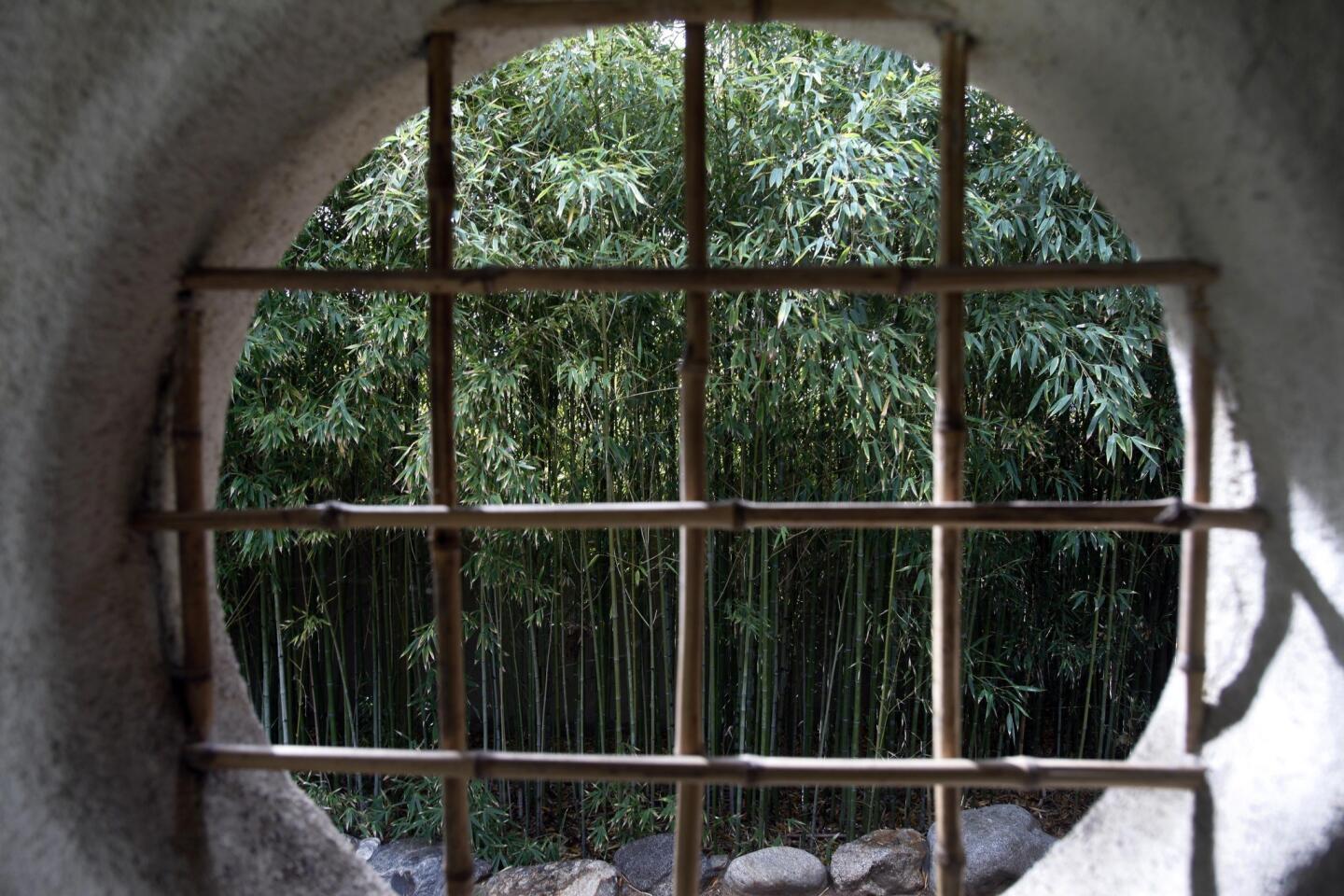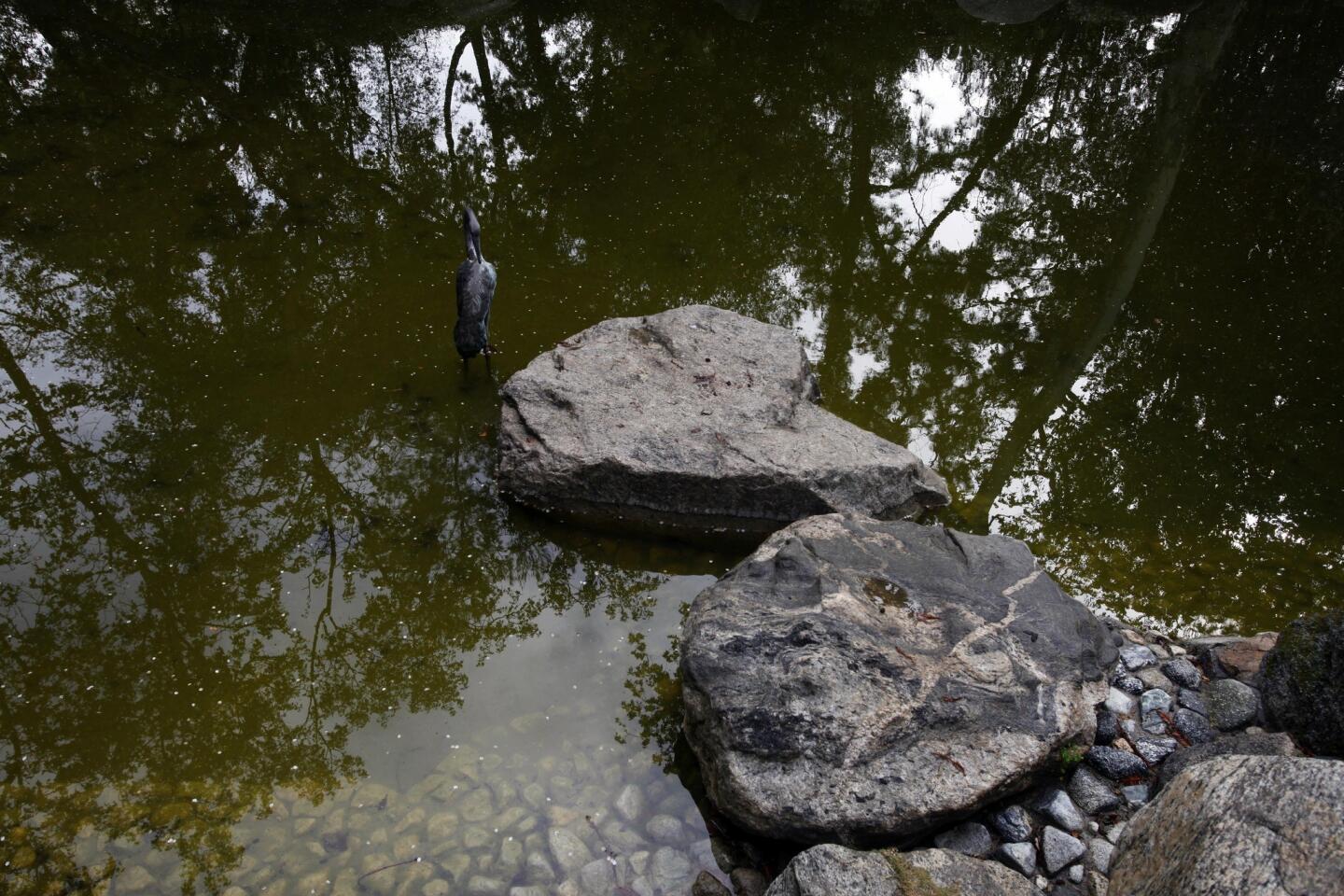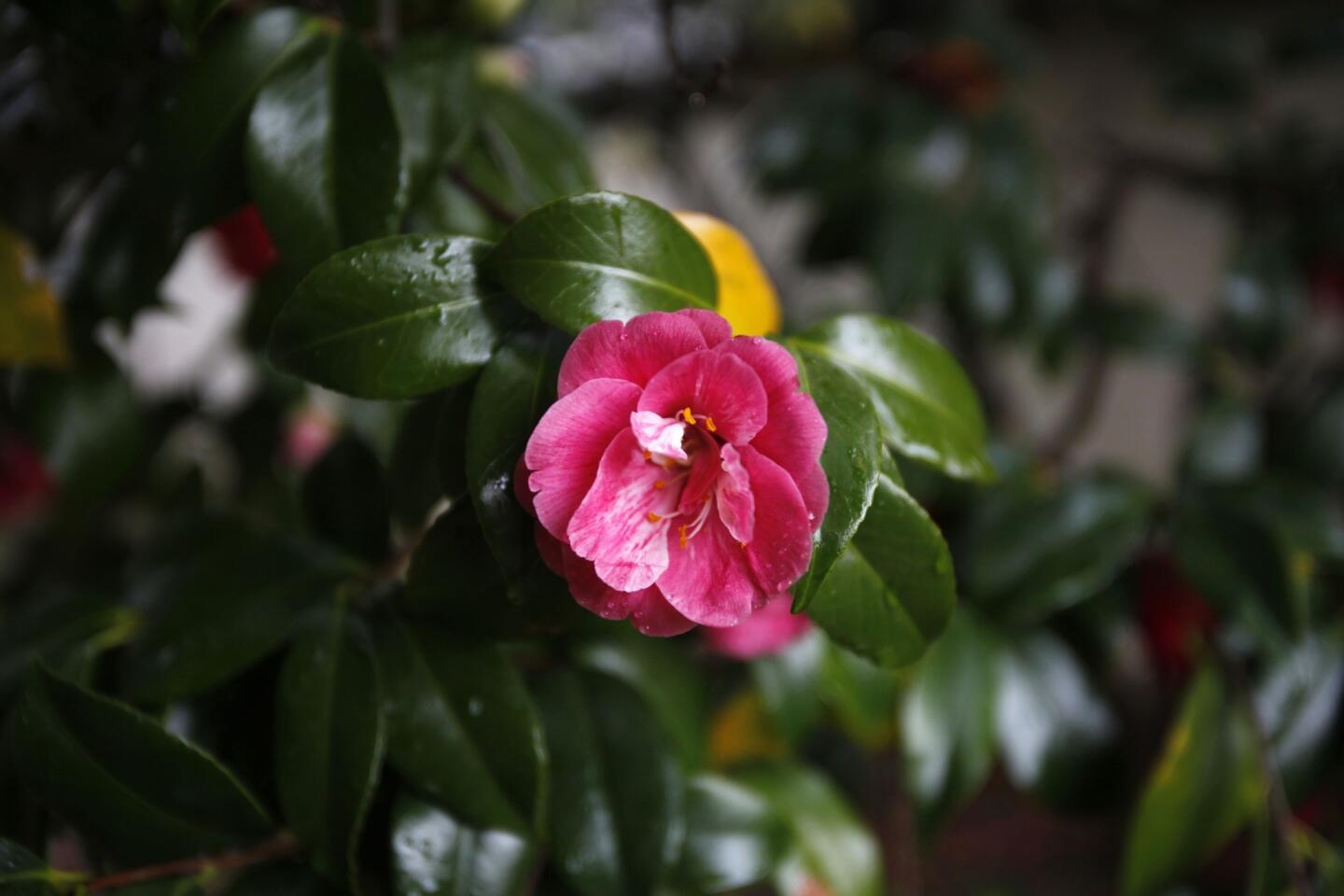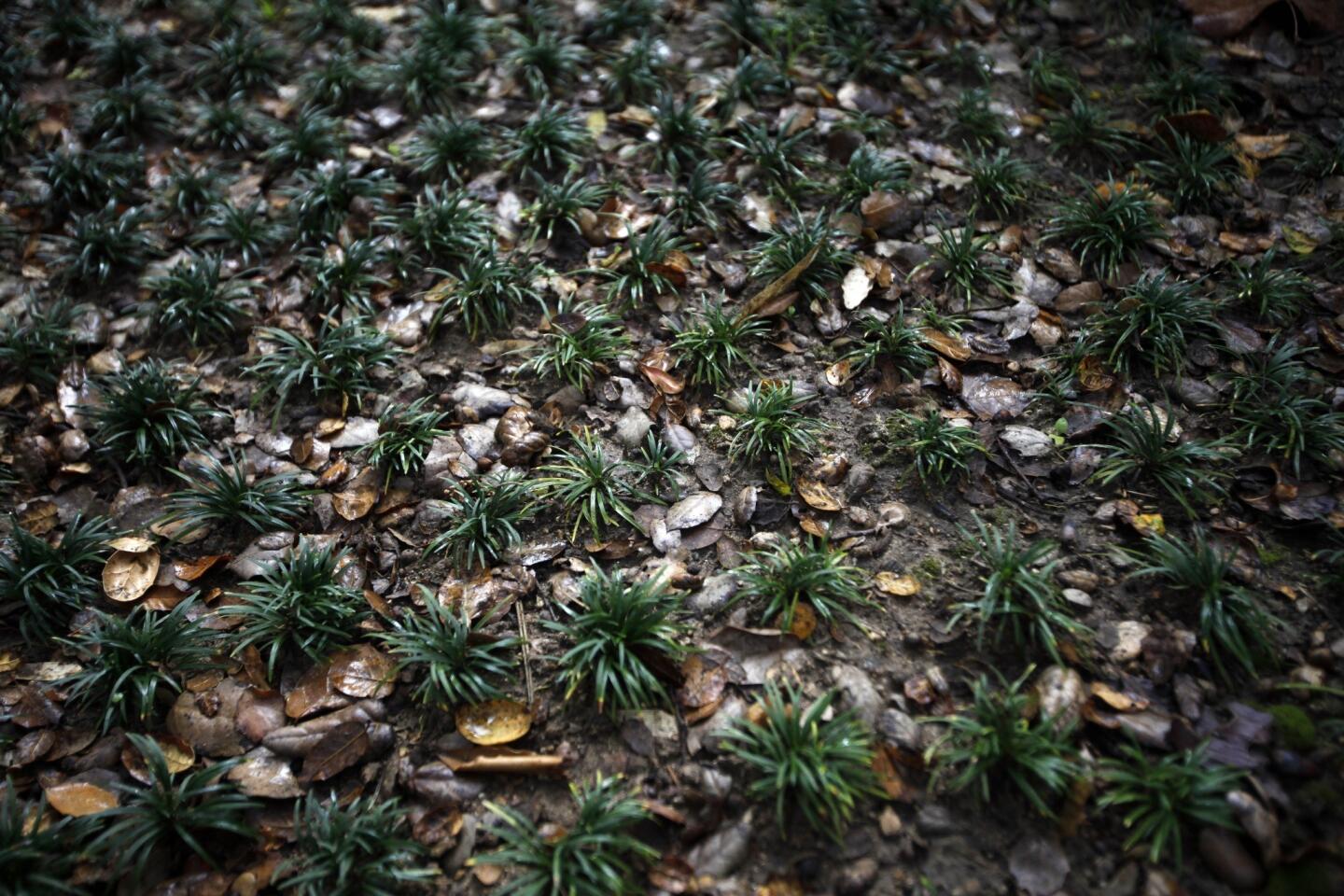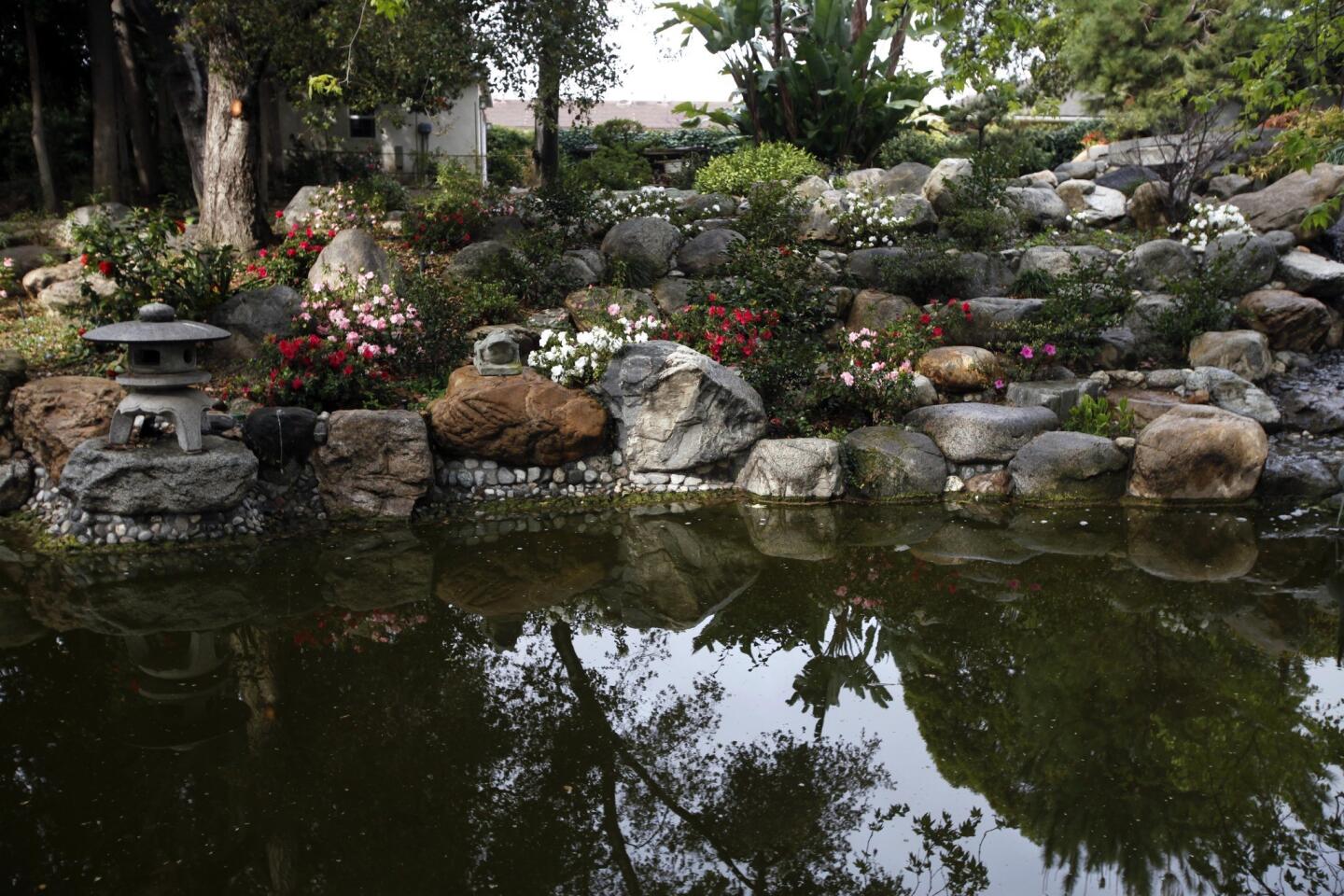Storrier Stearns Japanese Garden: Serene reawakening in Pasadena
By the time Jim Haddad inherited his family’s Pasadena property in the mid-1980s, the garden was in a state of neglect.
His parents had stopped maintenance on the nearly 2-acre Japanese-style garden a decade earlier, when Caltrans acquired about a third of an acre by eminent domain for extension of the 710 Freeway. Plants had died.
The pond had gone dry. Garden ornaments had been sold or stolen. The teahouse, overgrown with moss and weeds, had burned to the ground.
PHOTOS: Historic Storrier Stearns Japanese Garden revived in Pasadena
“Every real estate agent around wanted to sell off the lot in parts. It was tempting,” Haddad said, noting the enormous tax assessment that was coming his way. “They were offering a fair amount of money. But I couldn’t say yes.”
FOR THE RECORD:
Japanese garden: In the Saturday section elsewhere in this edition, an information box with an article about the Storrier Stearns Japanese Garden in Pasadena gives incomplete information for an April 28 Garden Conservancy tour. A ticket package for all six homes on the tour will be sold for $25 on April 28 at Arlington Garden, 285 Arlington Drive, Pasadena. An individual $5 ticket for only Storrier Stearns will be sold at that garden, 270 Arlington Drive. The error was discovered after the section went to press. —
Haddad and his wife, Connie, shared memories of living in the guesthouse as newlyweds; of their Labrador, wet from a dip in the pond, roaring through the plant beds; of a daughter’s wedding; and of their grandchildren playing around the manicured grounds. They also knew that the garden, though in serious disrepair, dated to 1935 and was of cultural importance. So they held on.
To fully understand the rebirth of the garden since then, you could note that in 2005, the Storrier Stearns Japanese Garden, as it is known, was placed on the National Register of Historic Places. Or you could simply see for yourself: The garden will be open April 28 as part of the Garden Conservancy’s Open Days tour.
What visitors will see is nothing short of time rewound. The garden, originally commissioned by Ellamae and Charles Storrier Stearns, was designed by Kinzuchi Fujii, a master carpenter, landscaper and recent immigrant. He conceived the landscape as a Japanese “stroll” garden that revealed itself — through essential elements such as ponds, waterfalls and a teahouse — as visitors wound around paths and over bridges.
Fujii’s clients spared no expense. Black leaded tiles topped a garden wall, and stone ornaments were imported from Japan. Tons of granite boulders were hauled from the Santa Susana Pass. A teahouse of nearly 400 square feet was built for the property in Japan, then shipped to Pasadena. The landscaping included plants typical of Japanese woodland gardens — black pines, Japanese maples, Chinese elms, camellias, azaleas, rhododendrons and ferns — as well as California natives such as redwoods and live oaks.
That vision remained relegated to history until the Haddads retired and could even think about bringing the garden back to life. The bones were still there — the winding path, the man-made hill from which a waterfall once tumbled, the concrete and granite bridges. And the freeway plans had languished for so long, the extension no longer seemed to be an imminent threat.
Jim started the enormous undertaking by reviving the pond.
“I labored over it for eight or nine months,” he said, until he found a sealant and method for fixing the leak. But there was much more to be done. The original waiting house, which in Japanese gardens is built along a path as a place to rest and contemplate the scenery before continuing on to a teahouse, was infested with termites. The burned-down teahouse, once a highlight, needed to be rebuilt.
When the Haddads questioned whether their efforts were worth the time and money, Kendall Brown, an authority on Japanese gardens and a professor of Asian art history at Cal State Long Beach, encouraged them to continue.
The Storrier Stearns garden, he said, is one of the few remaining prewar private estate gardens, remarkable for its scale and complexity. “It’s on a level with the best of the country’s top estate gardens,” Brown said.
Takeo Uesugi, a landscape architect and professor emeritus at Cal Poly Pomona, confirmed Brown’s assessment.
“He believed that it should be restored,” Connie Haddad said. “He impressed it upon us.”
Uesugi came on board as a consultant and introduced the Haddads to Jesus Rodriguez, a Colombian horticulturist who studied in Japan. Rodriguez moved onto the property to restore the garden with on-site composting, rainwater collection and proper plant care.
Jim Haddad, meanwhile, rebuilt the waiting house using a spruce tree discovered in Lake Arrowhead. (“If you’re going to be authentic,” he said, “you have to really look.”) Using plans for the original teahouse, he also oversaw the construction of its replacement — “as close to the original as you could get,” he said.
The original 11-foot-tall entrance gate had been dismantled and is in the Japanese Garden at Balboa Park in San Diego, so a replica was built. The rocked-lined paths were bolstered by seven truckloads of new rock. Bridges were repaired. New vegetation was planted.
The revival, as impressive as it may be, is only partly complete. The Haddads have plans for Phase 2, which will focus on one final section of the property. In the meantime, they’re enjoying the beauty they’ve re-created.
“This garden is something else in the moonlight,” Jim said inside the exquisite teahouse. “In the rain, there’s a serenity that overpowers you here.”
Added Connie: “It takes you away. It’s hard to realize with a quick visit. You have to sit in the garden and let it work on you.”
SEE IT
The Storrier Stearns Japanese Garden remains a private property, open only for filming and events, but it will be one of six private landscapes on the Garden Conservancy’s Open Days Pasadena tour on April 28. Admission to Storrier Stearns is $5 and can be purchased on tour day at that garden 270 Arlington Drive, Pasadena. Maps to all the gardens and a discount ticket set (six tickets for $25) will be available from 9:30 a.m. to 3:30 p.m. on tour day at Arlington Garden, 285 Arlington Drive, Pasadena. The Garden Conservancy’s Open Days Los Angeles tour, which covers six different properties, is scheduled for May 5. For more on Storrier Stearns: (626) 399-1721, japanesegardenpasadena.com.
